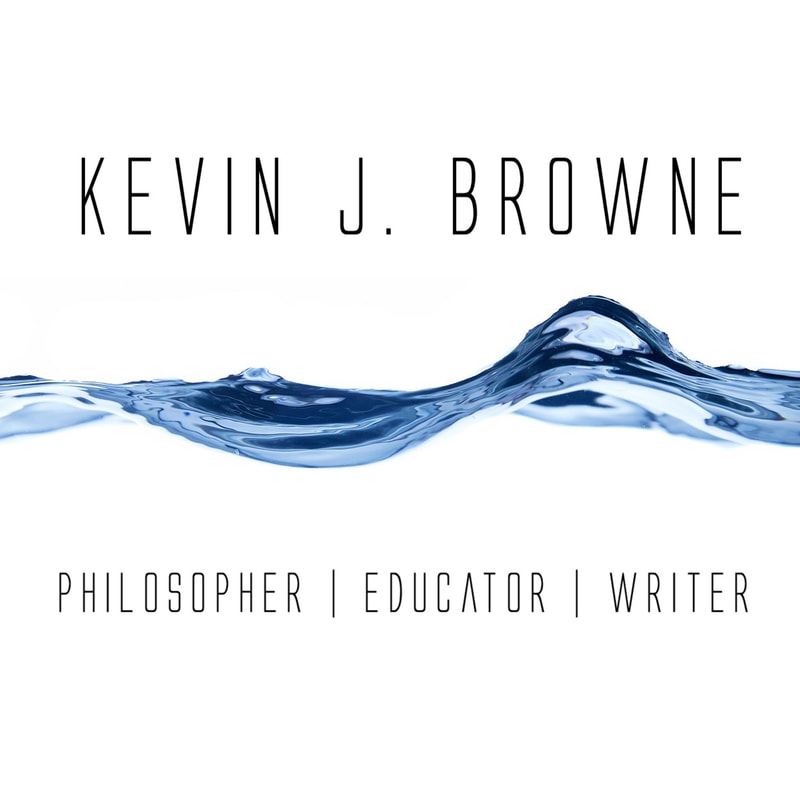|
The essence of creative thinking, or as Michael Michalko calls it "Creative Thinkering," is to make connections between things that seem unconnected. It takes practice and a willingness to step outside of your arena of expertise and learn things that seem irrelevant.
That's one of the benefits of required courses in subjects other than the one you're majoring in. When you are sitting in one of these classes wondering "What does this have to do with me?" or "How is this relevant to my major?" don't stop there. Take those questions seriously. Then make one small change and act. The small change. Start with this statement: This subject does have something to do with me. This subject is relevant. The action: Find out how. Don't wait for someone to show you how things are connected. Make connections. You'll be flexing your creative thinking muscle and coming up with new ideas. You never know what that might lead to. Most people exercise for both specific and general benefits. Often they don't specifically consider the benefits but usually know in some vague way what those benefits are and how exercising can achieve them.
I think education should be viewed in a similar fashion and the benefits we get from it are very similar, if not identical, to those we get from regular exercise. Let's consider some of them using the exercise analogy. 1. Exercise is best done at regular intervals. There are very few benefits to exercising if you only do it once every few months. Likewise, the benefits of studying are best realized when done at regular intervals. Not necessarily every single day but often enough to build on previous sessions and maintain a steady pace of learning. 2. Variety in exercise is beneficial. Most exercise programs consist of various activities to keep interest up and work various muscle groups at the same time. Likewise, when learning something it is good to vary what you're learning and how you're learning it. Reading is a good educational activity but so too is watching a video (such as a good TED talk) or practicing an activity. Different learning activities also exercise various parts of your thinking muscle (i.e. the brain) just as different exercises work for different muscle groups. 3. Exercises contain some form of resistance. I find that when I begin to question what students say in class they become frustrated. They are not used to having their ideas and opinions challenged and they don't like it. But, from an exercise theory point of view, this is a necessary part of education. Just as most exercises derive their benefit from exposing the body to resistance (weight training is a good example) so too education requires resistance. Asking students to justify their claims, back up their opinions with evidence, or explain their answers in a paper or exam are forms of resistance that further and deepen learning. 4. Exercises have specific as well as general benefits. Most exercises have very specific benefits such as strengthening specific muscles, toning specific body parts, or increasing stamina. Exercise also has more general benefits such as increasing overall health and well-being. Education can be seen in the same light. There are specific benefits to learning such as the specific skill or content being learned. But, there are also more general benefits that are just as important. Such benefits include being more well-rounded, gaining an appreciation and deeper understanding of the world at large, and improving one's social skills. Like exercise, education can be hard and feel exhausting at times. We don't always feel like getting up early to work out or do whatever exercise we have chosen. But, we usually do so because we recognize the benefits that come from exercise. And, most people who exercise regularly also do so because they enjoy it. If only we as parents and educators could encourage the same attitude towards education! “How should I answer these questions—according to what you taught me, or how I usually think about these things?” That’s what a student asked a professor who was trying to assess their understanding of some basic concepts in a physics course. As chronicled in an article titled “Twilight of the Lecture,” (http://harvardmagazine.com/2012/03/twilight-of-the-lecture) the students did not have a good understanding of the basic concepts taught in the course though they were passing all the exams.
The point of the article was that this reveals a huge gap between what professors think they are teaching by lecture and what students really learn. I think there is another important point to glean from this not-so-isolated phenomenon. Let’s consider that question again from the student: “How should I answer these questions—according to what you taught me, or how I usually think about these things?” I think this question reveals another gap worth addressing. The gap between what students think they already know and what they must tolerate from professors in order to pass courses. I suspect this question reveals a deep distrust of what is being taught in the classroom. What are the possible sources of this distrust and what can be done to address it? I’m not sure I have an answer but I will share some thoughts on the question. I have noticed a growing skepticism among students in my courses for several years now. The best example of this happened to me in an Introduction to Philosophy course. I was talking to a student before class began. She was describing her lack of interest in what we were covering in the course and I asked her what she was interested in. I was hoping to show her a connection between what we were covering in the course and what she was already interested in. She replied that her major was psychology. I responded by pointing out that psychology was really an outgrowth of philosophy and many of the first psychologists were, in fact, also philosophers to which she replied “so you say.” Naturally I was taken aback by this response! Could I have just made up the connection between philosophy and psychology? Perhaps I did this from an unacknowledged bias for philosophy. Perhaps I would have claimed such spurious connections between philosophy and anything she mentioned. While I have not encountered such overt distrust in what I say in the classroom often I have noticed a growing trend towards subtle distrust. I’m not saying that this distrust is always misplaced and should be replaced by a blind acceptance of whatever is said in the classroom by professors. Goodness knows academics have made mistakes in the past and will continue to do so. But, what is troubling is the ease with which consensus expert knowledge is being rejected out of hand before even being learned. Michael Specter writes about this in his book titled Denialism: How Irrational Thinking Hinders Scientific Progress, Harms the Planet, and Threatens Our Lives. There is so much knowledge that we have gained even in the past few decades that provides useful insights into many areas of life and while it’s not possible to keep up with the production of this knowledge, as an academic and educator it is quite disheartening to see students who lack even a basic curiosity about this knowledge and do not even see that it might be beneficial to them to reach out and learn about these new insights. What are your thoughts on this? What can be done to inspire both curiosity and critical thinking regarding what is being taught in the classroom?
Image by Ulrike Mai from Pixabay
The psychologist Martin Seligman helped discover the phenomenon of learned helplessness. As described by Kendra Cherry “Learned helplessness occurs when an animal is repeatedly subjected to an aversive stimulus that it cannot escape. Eventually, the animal will stop trying to avoid the stimulus and behave as if it is utterly helpless to change the situation. Even when opportunities to escape are presented, this learned helplessness will prevent any action.” Originally discovered in studies of animals the findings have been shown to apply to people as well. Recent studies indicate that this helplessness may not be learned but rather an institual response to environmental conditions. In either case, it can be a problem.
Image by Hai Nguyen Tien from Pixabay
Education is something that seems to be "done" to students. But, that's just the problem. We don't have a "culture of doing" focused on students. We do to them, instead of getting them to do for themselves. We try to educate them instead of encouraging them to learn. Of course, this problem begins long before they reach the college classroom. As a vice president at Enterprise Rent-a-Car, Marie Artim pointed out “This is a generation that has been ‘syllabused’ through their lives." http://www.washingtonpost.com/news/grade-point/wp/2015/01/26/why-are-so-many-college-students-failing-to-gain-job-skills-before-graduation/ The ancient art of Feng Shui is premised on the idea that your environment affects your well-being. While many people find some of the points of Feng Shui suspect and superstitious, there is no doubt that the underlying principle is true. A more contemporary version of this insight is a central feature of design thinking. When you create solutions for people you need to do so with their needs in mind. Imposing solutions on people without considering their reactions and situations often leads to more problems that need fixing. Here’s a good example. Conventional MRI technology looks like the photo below: For children who need to undergo the procedure the sedation rate is over 80%. In other words, 8 out of 10 children must be given some sort of sedative to even get them to go into the machine. But, for the very same technology pictured below the sedation rate is below 1%. The difference? The MRI below has been designed with the end user in mind. Do we do the same in our classrooms? Sometimes we do, in kindergarten and elementary school. But, as children grow up we seem to think that design matters less and less. So, by the time I see students in a college classroom, we have them in spaces that often give no thought to their needs. Somehow, adults are considered not to be in need of design solutions. Nothing could be further from the truth.
Most college classrooms probably look like mine. Concrete walls, few pictures on the wall, fluorescent lighting, uncomfortable seating. How does this enhance the learning experience? In my case, the irony is that the building has very nice conference rooms with more natural lighting, better seating, nicer ambiance. They remain empty most of the time being reserved for important meetings. The message this sends is that meeting with students in a class is not important enough to warrant the use of these spaces. Nice. A little design thinking would go a long way in education. Not only would it help with the physical environment but also with the learning itself. Do most professorial lectures take into account any design principles? Hardly. Do most PowerPoint presentations take into account design principles? Mostly not. A few good places to start might include:
There's a large and growing body of research on best practices of teaching. Most of it seems premised on the idea that we know exactly how students learn and therefore we know exactly how to teach them. It is largely based on the behavioral model of psychology. Push a button, get a response. I think there's an inherent dishonesty at work in this research on teaching and learning. Dishonest because it denies an inherent complexity and subjectivity which lies at the heart of teaching.
The National Geographic-Roper survey of geographic literacy is now famous for its findings regarding American school-age kids. Many do not know the basics of geography. A few of the more disturbing findings are as follows:
 Imagine meeting someone who could only see this picture as a duck. They cannot see the rabbit. Your job is to get them to see the rabbit. That is what teaching really comes down to. Getting someone to see something new or something old in a new way. How do you do it? I don't know. As an educator what I feel like I do know is this: This task cannot be quantified. This task cannot be achieved using the same method for everyone. This task is not measurable as a learning outcome. But, this task is the central function of good teaching. Measure what you want. Create tests and teach to them. Assess and assess and assess. But, don't think what you're measuring is getting you any closer to seeing the rabbit if you can only see the duck yourself. In an interesting article titled "AT&T and Udacity partner to create the ‘nanodegree,’ a new type of college degree," Gregory Ferenstein describes an interesting new approach to the college degree: the nanodegree. What I find most interesting about the article and will comment on is this part: "Last year, on stage with California Lt. Governor Gavin Newsom, Udacity founder Sebastian Thrun announced a new consortium of businesses, the Open Education Alliance, that would agree to recognize an industry-focused skills credential. The nanodegree is the first product of that promise, together with many of the original partners, from AT&T to Autodesk. “It’s a failure of the community college system, the California state system, and the University of California system that that announcement was made,” said Newsom, who believes California education should do more to address the widening skills gap." In particular, take note of Newsom's comment: "It's a failure of the community college system, the California state system, and the University of California system that that announcement was made." Presumably, a failure because these state institutions did not come up with the idea on their own. It should come as no surprise that such large bureaucracies did not come up with such an innovative idea or if they did, they could not effectively and efficiently implement it. It's simply not one of the strengths of large bureaucracies to do this. Any ideas like the nanodegree that originate within a large academic institution have a long and arduous process to go through before they gain acceptance and implementation. Often they must suffer through long committee processes designed, from what I can tell, to kill such ideas. Having served on such academic committees and tried getting ideas through them I speak from some experience. But, can we entirely fault a system that is not set up to promote innovation for failing to come up with innovative ideas and act on them? Higher education will be going through some major disruptive innovation over the next 5-10 years. The question I have been raising in whatever forum will provide an opportunity is whether colleges and universities will contribute to this innovation or will they simply remain on the sideline and in denial about what is happening all around them. I suspect that it will be the latter for the most part. As more innovative ideas like nanodegrees come about, we will see more failures of other community college and state university systems. Those inside these institutions have been warned! |
KEVIN J. BROWNEPhilosopher / Educator These blog posts contain links to products on Amazon.com. As an Amazon Associate I earn from qualifying purchases.
Categories
All
Archives
April 2023
|










 RSS Feed
RSS Feed
















